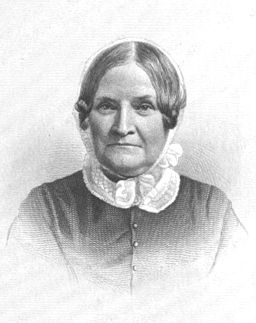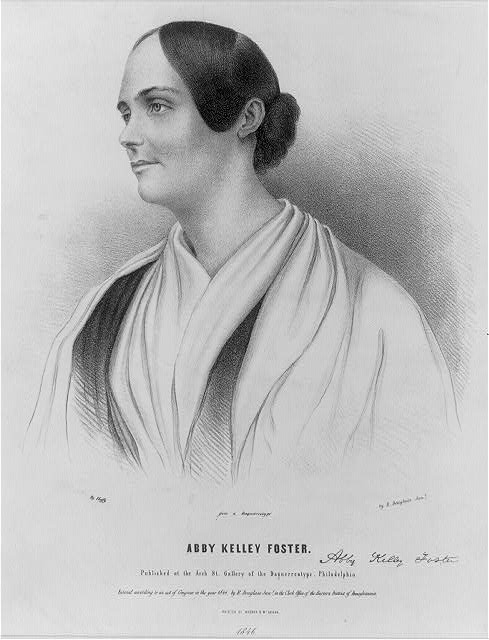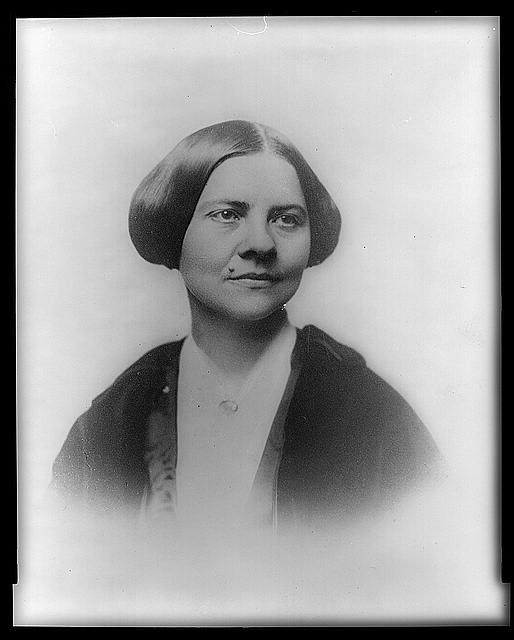Women's Rights
Women used the anti-slavery struggle to challenge their own oppression. Female abolitionists defied the limitations of the domestic sphere by delivering lectures, organizing societies, and raising funds. The anti-slavery movement enabled women to enter into spaces reserved for men, and claim positions of power. By advocating for anti-slavery, women effectively resisted gender hierarchy, and helped forge an emerging feminist ideology. Anti-slavery proponents, however, did not uniformly support women in the movement. Female abolitionists enjoyed their greatest support from the abolitionists associated with William Lloyd Garrison, who viewed women’s rights as part of the broader effort to protect human rights. Conversely, the coalition of anti-slavery reformers who resented Garrison also generally rejected women’s role in the movement. The conflict over female abolitonists was the primary cause of the 1839 schism within the American Anti-slavery Society. Garrison’s rivals seceded from the society to form the Massachusetts Abolition Society, also known as the “new organization”, which formally forbade female participation.1 A member of the new organization, Amos A. Phelps wrote a letter to E.D. Hudson in which he indicated that he did not want the cause of the slave attached to either the "woman question" or the "no-government question".2
As a firm supporter of Garrison, Hudson did not share Phelps’ views. Hudson recognized the contributions made by female abolitionists, and understood the necessity of women’s rights for reforming society. Hudson worked closely with leading women’s rights activists such as Sojourner Truth, Lydia Maria Child, Lucy Stone, and Abby Kelley.3 In a letter to his wife Martha, Hudson said of Kelley “Abby Kelley is doing a glorious work here – causes the beasts and Babylons to gnash their teeth with rage.”4 Hudson worked alongside women, and believed women should experience the same rights as men. In his journal, Hudson indicated he had a discussion with a Mr. Buell about “Placing woman on equal footing with man in society, business, property, and disposal of it.”5 Unlike many of his peers, Hudson also noticed linkages between slavery and patriarchy as he wrote in his journal “Well what must the ladies do? They must be pioneers here and when 3,000,000 of ladies send their petitions to congress then they will be heard and 1,000,000 of sisters in bondage will be free. Will it answer for ladies to work and be pioneers in such a work, no, no, who says no? The slaveholder, who reproaches the north for elevating and rendering useful the ladies – no he says – our patriarchal institutions are good but a society which is no good orientalism is but the ladies ought only to be tools for the pleasure of their lords.”6 By supporting women’s rights, Hudson challenged the patriarchal power structure of the plantation.
Hudson formally endorsed women’s rights, but many of his positions still hinged on paternalist premises. Hudson strongly viewed the household to be the exemplar for society because he believed families to be free from market forces. On May 29, 1842, Hudson commented in his journal "The husband and wife are one, interests one, happiness one - identical. Their children, the fruit of their bodies - their best welfare is the primary object of their parents; no jealousy springs up for fear that one will consume more than another; each and every individual member of the family's happiness is the primary and main design of all their thoughts and operations - not worldly prosperity, but their intellectual enjoyment, which comprises the enjoyment of health and physical comforts etc. No member of the family loses his or her individuality - and yet the interests of all are identical."7 Hudson believed in the infallibility of families because he controlled his family as the head of household. Hudson's position as head of household blinded him to the gendered power imbalances within many American families. Hudson’s reasoning thus extended the logic of the domestic sphere and its adherence to gendered hierarchy. Hudson understood the relationship between women’s rights and slavery, but that did not spare him from his own paternalist assumptions.8
Citations
Images:




